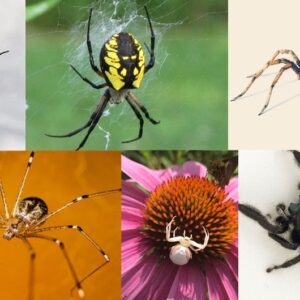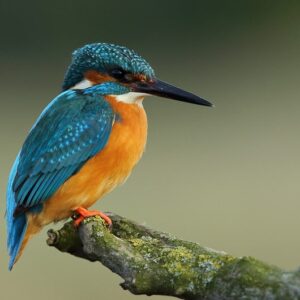
Animals, both in the wild and in our homes, are fascinating creatures with a range of body parts and structures that are uniquely designed to help them thrive in their environment. Along with their breathtaking beauty and intriguing behaviors, the various parts of an animal provide us with a wealth of information about their anatomy and physiology.
In this blog post, we will take a deep dive into the different sections of animals, exploring everything from head to tail.
Head
The head is a crucial section of an animal’s anatomy as it contains several essential organs and features necessary for survival. It houses the brain, which serves as the control center for the body’s various functions, and the eyes and ears, which enable the animal to navigate and understand its environment. The nose, mouth, and tongue aid in the animal’s sense of taste, smell, and feeding.
Some animals have specialized adaptations in their heads, such as the long, powerful beaks of birds used for preening feathers and grasping food, or the elongated, sensitive snouts of pigs used for rooting and sniffing out food.
The head also plays an important role in social interactions among animals. For instance, some species use head gestures, such as nodding or shaking, to communicate messages such as aggression or submission. Thus, the head is a multifaceted and significant aspect of an animal’s life that serves many functions beyond just the basic necessities.
Neck
The section of an animal’s body commonly referred to as the neck plays an important role in facilitating movement and supporting the head. This section is located between the head and the trunk of vertebrate animals and is made up of a series of vertebrae that allow for a wide range of motion. In mammals, the neck is also home to major blood vessels, nerves, and muscles that allow for functions such as breathing, swallowing, and vocalization.
In some species, such as giraffes, the neck has evolved to be particularly long in order to help the animal reach leaves high up in trees, while in others, such as birds, it has become remarkably flexible to aid in flight and locating prey.
Torso
The torso is a critical part of the anatomy of animals, including humans. Often referred to as the trunk, it is the central and largest part of the body that contains vital organs such as the heart, lungs, liver, and stomach. The torso is composed of different structures that function to support and protect the body’s internal organs.
For instance, the ribcage provides protection to the heart and lungs, while the spinal column supports the body and provides a stable base for movement. The internal organs within the torso cooperatively work to ensure the proper and smooth functioning of various systems in the body. Thus, the torso plays a crucial role in animal survival and is a significant area to study in anatomical research.
Limbs
The limbs of animals are an important section of their body structure, allowing for movement and mobility. While the number and type of limbs can vary greatly among different species, it is a universal feature that most animals possess. The limbs typically consist of bones, joints, muscles, and tendons, all working together to provide a range of movements such as flexion, extension, abduction, and adduction.
Many animals have specialized limbs designed for specific purposes, such as the wings of birds for flight, the flippers of whales for swimming, or the powerful legs of cheetahs for running at high speeds. Additionally, the structure and function of limbs can provide clues about an animal’s lifestyle and evolutionary history. For example, primates have grasping hands and feet, adapted for tree-dwelling, while snakes have vestigial limbs indicating a common ancestor with legged reptiles.
Tail
In the world of animals, the tail is a distinct anatomical feature that has evolved to serve a variety of unique purposes. In fact, the tail is one of the most diverse and versatile appendages found in the animal kingdom, with various functions ranging from balance, propulsion, communication, and defense. Tails come in an array of shapes and sizes, each one specialized to meet the specific needs of the animal species possessing it.
Some animals, like cheetahs and kangaroos, use their tails as a counterbalance while running and jumping, while others, like scorpions and porcupines, have tails adorned with stinging and defensive spines. The tail region of an animal is a fascinating subject of study worthy of closer examination, as it can reveal important insights into unique adaptations and strategies for survival in the animal world.
Skin
The skin is an essential part of an animal’s body that serves several functions.
Firstly, it provides a physical barrier that protects the internal organs and tissues from external factors like heat, cold, moisture, and pathogens.
Secondly, it regulates the body temperature by controlling the loss or gain of heat.
Thirdly, it serves as a sensory organ that detects stimuli like touch, pressure, heat, cold, and pain and relays the information to the brain.
Fourthly, it produces and stores vitamin D, which is essential for bone health.
Finally, it plays a role in social communication through visual signals like camouflage, coloration, and patterns.
The skin of animals varies in thickness, texture, coloration, and features depending on the species, habitat, and evolutionary adaptations. For instance, some animals have scales, feathers, fur, or hair that provide extra protection, insulation, or aerodynamics. Others have specialized structures like quills, spines, horns, or antlers that serve defensive or offensive purposes.
Conclusion
The body structure of animals is an incredible and fascinating subject, with each species featuring unique adaptations and features that enable them to survive in their environment. From the torso and internal organs to the limbs, tail, and skin, every part has a specific purpose that ensures optimal functioning for the animal.
The study of anatomy provides important insight into how these creatures were designed and the various adaptations that enable them to exist in their respective habitats. With further research, we can continue to uncover how these amazing animals are constructed and hone our understanding of the animal kingdom.


